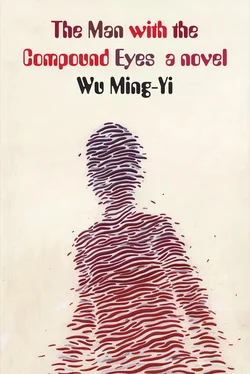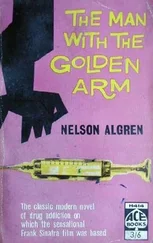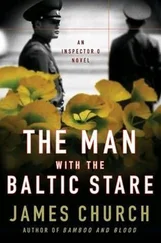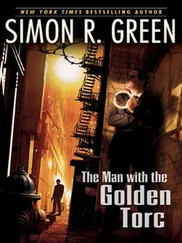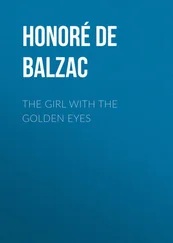A few days before, Alice had gone to a new bookstore in town to get the right notebook. The prevalence of computers did not seem to have decreased the number of notebooks on the market. Lots of people still enjoyed having a booklet close at hand, jotting things in it when they felt like it. The store had a large selection. Alice took a liking to a notebook with a blue cover without any lettering. But the “paper” inside felt really neat to the touch. The clerk explained, “It’s made in Germany. It’s really cool. You can also buy a vial of this correction fluid. It’s an organic plant-extract, and you use it wherever you want to erase and rewrite. It erases just like that, no sweat. The paper is made out of hemp fiber but has the texture of traditional paper.”
“Amazing, fake paper that’s just like the real thing.”
“No, no, miss, this is real paper.”
Well, the clerk was right. Maybe she’d fallen into a kind of intellectual trap. She’d started with a preconceived notion of paper and regarded anything that seemed “like paper” as fake paper or a replacement for paper. She felt that the whole world seemed to be of the same composition as this paper, but she could not say how, at least not until she got home and another thought occurred to her. About a dozen years before, people had started promoting “green living” or “slow living,” and so forth, but this was just the latest fad. The people of this island basically pursued whatever was popular, not because it was significant but because it was “the latest.” Saying “this is the latest” to Taiwanese people was like casting a spell on them, or like playing the melody of a magic flute that made whosoever heard it follow along. And this paper seemed to provide temporary repose to all such newfangled notions. But it was not a digital repose. It was writing out one stroke at a time the characters that appeared really necessary, worth preserving for all eternity.
“Yes, I guess it is, in that sense.”
Alice bought a stack of notebooks in one go. Sitting by the Sea Window, she would write poems in the shape of a mouse’s tail, in imitation of Alice in Wonderland . Sometimes she’d draw Ohiyo fast asleep, or copy out Toto’s insect notes: highland red-belly swallowtail butterfly (Mount Li), Chinese hairstreak (Mount Ninety-Two in Nantou County), jewel beetle (Plum Mountain in Chiayi County), midnight luster stag beetle (Mystery Lake), moon-gazer stag beetle (Lala Mountain) … Alice discovered that insects sometimes had very charming names. They got more and more familiar until she pretty much had them all memorized. Now it was like her mind contained a forest, a mountain.
Today Alice would try writing fiction again. For a while, she thought she could keep writing stories on this paper. She would finish one, erase it and write another, over and over again. One day a reader might think he was reading a single story when he was actually reading countless stories. But right at this moment, all she had in her mind was an opening:
Nobody has ever seen the forest she now beholds, like a forest in a novel that has grown into a real wood .
That was as far as she had gotten. Didn’t matter, though, because in any case she was no longer writing with a particular end in mind. Besides, maybe a single sentence could be considered a complete story. She put down her pen and poked her head out the window, wanting to enjoy the nice weather, only to discover a bunch of people setting up tents on the beach all the way from her house to the Seventh Sisid, some even pointing cameras right at her place. She couldn’t believe her eyes. When the cameras noticed the lady of the house sticking her head out, it was like they’d found a new quarry: all of them turned toward her as if they were synchronized.
Alice was momentarily dazzled, by the hue of the sun and the glare off the water. The light turned into a kind of strange vibration. It confined her, confused her. Her chest was ready to burst; something inside her yearned to escape. Then, in the midst of a mind glitch, she suddenly dove out the window, like a dolphin.
These days wherever Dahu went, he would think of the scene that day in the mountains: a gorge shrouded in a milky mist, a young man appearing out of nowhere like rain.
Could someone really “go back” to the mountains? Dahu was watching Umav, who was unclipping her hair to check whether her bangs were even with rapt, undivided attention.
They were eating at the Old Shandong Noodle House. A regular patron, Dahu ordered the usual: a plate of noodles and a bowl of meatball soup. And Umav had beef dumpling soup. Though Umav had Bunun features, her skin was extremely fair. Aboriginal kids like Umav had been born and raised in the city. The TV they watched and the kids they met mixed fashions and lifestyle trends from Taiwan, the United States, Japan, Korea and a few other countries; they learned their fashion sense and way of life from the internet. Dahu wondered whether Umav’s generation was a new breed of Bunun. Umav reclipped her hair and started jamming away at the air keyboard on the edge of the table. Dahu waited for a pause in her performance before asking: “What’s the tune?”
“ ‘The Happy Blacksmith.’ ”
“Oh, ‘The Happy Blacksmith.’ ”
A few years before, Dahu had followed the latest trend in children’s education and sent Umav for piano lessons. This appeared to be her favorite activity. But Dahu was utterly ignorant. He did not know who had composed “The Happy Blacksmith” or what the notes were. Since he’d never met a blacksmith in his entire life, he wondered why the blacksmith would be happy instead of sad. Come to think of it, the blacksmiths in some of the movies he’d seen all looked pretty glum, at least when they were striking the iron. Anyway, maybe there weren’t any blacksmiths left at all anymore.
On TV, the beautiful anchorwoman was reporting on an incredible news story in a broadcaster’s standard Mandarin. The volume was turned way up, but the speaker seemed to be broken and the sound kept breaking up. All you could make out from the spluttering speaker was words like “trash,” “island,” and “Pacific.” The anchorwoman’s voice was strident and shrill. For some reason TV stations today seemed to favor such loud news anchors.
The Old Shandong Noodle House was a greasy spoon, but Dahu found this kind of restaurant had the tastiest side dishes. The proprietor wasn’t from Shandong at all. He was a local, born and bred in Haven. He changed the name after his son married a girl from Shandong. After she arrived Dahu thought the taste of the dumplings changed, and later he realized it was the skin that had changed, not the filling.
Dahu got the remote control, turned it down a bit, spread out the greasy newspaper on the table and found that the report he’d just seen on TV was front-page news. The headline read, COAST IN CRISIS! TRASH VORTEX ABOUT TO ENGULF TAIWAN.
[staff report] Taiwan is about to be sucked into the Trash Vortex! In 1997, the oceanographer Charles J. Moore was the first to discover that a vast tract of the north Pacific was strewn with plastic trash, forming what can be described as the world’s largest garbage dump. Others have called it the Plastic Continent or the Trash Vortex. The vortex had been kept in place by swirling underwater currents, typically ranging from 500 nautical miles off the coast of California all the way to Japan.
Moore has described how he discovered the vortex one year while en route to the start of the Transpac sailing race from Los Angeles to Hawaii. It was the day before the big race and without realizing he steered his craft into the “North Pacific Gyre.” He thought he had stumbled into some kind of alternate dimension. In the gyre the ocean circulates slowly because of little wind and extreme high pressure systems. Usually sailors avoid it. Moore was astonished to find himself surrounded by rubbish. His ship plowed through the stuff day after day, taking about a week to reach the other side. At the time Moore believed there was over a hundred million tons of flotsam circulating in the north Pacific, divided into eastern and western garbage patches in orbit around Hawaii. That was in 1997. Now it’s even more massive, totaling at least two hundred million tons.
Читать дальше
